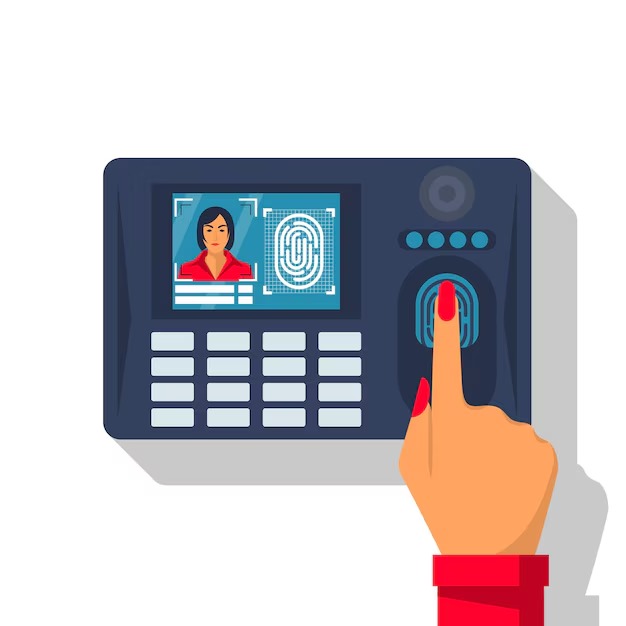In today’s fast-paced business world, managing employee attendance efficiently is crucial for productivity and compliance. Traditional attendance tracking methods, such as manual registers and swipe cards, are prone to inaccuracies, buddy punching, and administrative burdens. Biometric integration for attendance management has emerged as a game-changing solution, offering precision, security, and seamless workforce monitoring.
This blog explores how biometric technology enhances attendance management, its benefits, and how organizations can successfully implement it.
Understanding Biometric Integration for Attendance Management
Biometric technology uses unique physiological traits such as fingerprints, facial recognition, and iris scans to authenticate an individual’s identity. When integrated into attendance systems, it ensures accurate time tracking, eliminates fraudulent practices, and improves overall workforce management.
How Biometric Attendance Systems Work
- Enrollment Process: Employees register their biometric data (fingerprint, facial features, or iris scan) into the system.
- Real-Time Authentication: When clocking in or out, employees scan their biometric data, which is verified against stored information.
- Data Synchronization: The system records attendance logs and synchronizes them with HR or payroll software for processing.
Benefits of Biometric Integration for Attendance Management
1. Eliminates Time Theft and Buddy Punching
Biometric systems prevent employees from clocking in or out for each other, eliminating buddy punching and reducing payroll fraud. This enhances fairness and accountability in the workplace.
2. Enhances Accuracy and Reliability
Unlike traditional methods that rely on manual entry, biometric attendance systems ensure error-free data, reducing discrepancies in attendance records. With accurate logs, companies can efficiently manage leaves, overtime, and shift schedules.
3. Boosts Productivity and Efficiency
Automated tracking reduces administrative workload, allowing HR teams to focus on strategic initiatives rather than manual attendance verification. Employees also experience a seamless check-in process, reducing delays and improving punctuality.
4. Strengthens Security and Access Control
Biometric systems not only track attendance but also enhance workplace security by restricting unauthorized access to certain areas. This dual-purpose function makes them an essential tool for modern workplaces.
5. Cost-Effective and Scalable
Over time, biometric systems reduce operational costs related to manual attendance management, time theft, and payroll errors. These systems are highly scalable, making them suitable for small businesses as well as large enterprises.
Implementing Biometric Integration: Key Considerations
1. Choosing the Right Biometric Technology
Organizations can select from various biometric authentication methods, including:
- Fingerprint Recognition: The most common and cost-effective solution.
- Facial Recognition: Ideal for touchless authentication, reducing hygiene concerns.
- Iris Scanning: Offers high security but is expensive and requires specialized hardware.
2. Integration with HR and Payroll Systems
A well-integrated biometric system should sync seamlessly with HR and payroll software to automate salary calculations and leave management. This integration minimizes payroll disputes and enhances transparency.
3. Ensuring Data Security and Compliance
Since biometric data is sensitive, organizations must implement data encryption, access control measures, and GDPR-compliant practices to protect employee privacy. Secure data storage and restricted access ensure compliance with labor laws.
4. Employee Training and Acceptance
Resistance to change can be a challenge. Conducting awareness programs and highlighting the benefits of biometric attendance systems can help ensure employee acceptance. Organizations should educate employees on how biometric technology enhances workplace fairness and security.
5. Maintenance and Support
Regular system updates, maintenance, and technical support are necessary to ensure smooth functioning and data accuracy. Organizations should partner with reliable biometric solution providers for long-term efficiency.
Real-World Applications of Biometric Attendance Systems
1. Corporate Offices
Enhances workplace discipline by ensuring employees adhere to working hours and reducing absenteeism.
2. Manufacturing Units
Tracks shifts and overtime efficiently, reducing payroll errors and ensuring workforce availability at all times.
3. Educational Institutions
Monitors student and staff attendance, ensuring compliance with institutional regulations and improving administrative efficiency.
4. Healthcare Facilities
Helps manage shifts of doctors and nurses, ensuring round-the-clock staffing and better patient care.
5. Retail and Hospitality Industry
Enables smooth workforce management, especially for businesses with high employee turnover.
Future Trends in Biometric Attendance Systems
With technological advancements, biometric attendance systems are evolving rapidly. Some emerging trends include:
- AI-Powered Facial Recognition: Enhances accuracy and reduces false positives.
- Cloud-Based Biometric Solutions: Enables remote workforce tracking and multi-location access.
- Mobile Biometric Apps: Allows employees to clock in using their smartphones with fingerprint or facial recognition.
- Voice Recognition: A touchless alternative gaining traction in corporate environments.
These innovations will further streamline attendance management, improving workforce productivity and security.
Conclusion
Biometric integration for attendance management is transforming workforce monitoring by enhancing accuracy, security, and efficiency. With reduced fraud, seamless integration with HR systems, and improved productivity, biometric technology is a must-have for modern businesses. Organizations should carefully select the right biometric system, ensure data security, and provide employee training for a successful implementation.
Adopting biometric attendance solutions is a forward-thinking approach that not only simplifies attendance tracking but also contributes to a more secure and productive work environment. As technology advances, biometric systems will continue to revolutionize workforce management, offering businesses a reliable and scalable solution for attendance tracking.
Are you ready to upgrade your attendance management system? Explore biometric solutions today and transform the way your organization tracks workforce attendance.

